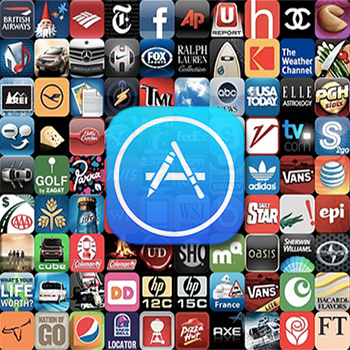Is An App Store For Enterprise Software Possible?

There are three concepts that you first need to understand before answering the question: multi-tenancy; network tenancy; and platform-as-a-service (PaaS).
Think for a minute about the diverse activities you can do with your smart phone.
You have thousands of options for navigating, communicating, playing games, tracking your sleep and exercise, etc. “Apps” have woven themselves into our everyday lives, and this trend shows no signs of stopping.
In this post, I want to talk about a parallel development within the enterprise market - I will show how platforms and “apps” are revolutionizing the B2B space.
Enterprises can build their own custom applications or buy an application built by a third-party that runs on a fourth-party platform.
As you’ll see, this leads to incredibly innovative outcomes, such as a cloud platform for commercial supply chains being used to rapidly develop applications for the U.S. Marine Corps and the healthcare industry.
To understand what I’m talking about, there are three concepts that you first need to understand: multi-tenancy; network tenancy; and platform-as-a-service (PaaS).
- PaaS. The idea here is that enterprises can build applications for themselves and for each other that run on a cloud-based platform. This is already recognized as a major trend. As long ago as 2011, Gartner was already proclaiming it to be “the year of PaaS”, and since then the concept has only grown more important.
- Multi-tenancy. Multi-tenancy refers to a specific way that software is architected. It occurs where a single instance of software serves multiple user organizations (tenants). A good example of multi-tenancy today would be what Salesforce.com did with CRM. Multi-tenant apps have many benefits, but the primary advantage is lower costs; rather than customers maintaining or hosting the application themselves, the vendor manages the single instance across all tenants, which is generally much cheaper than traditional, single-tenant software. The vendor passes along these cost savings back along to its customers. Another key advantage with multi-tenancy is that whenever the vendor improves the application, all tenants can be upgraded simultaneously, because all are using the same instance. This is especially valuable when there are thousands of tenants.
- Network-tenancy. This takes multi-tenancy and further refines it. Network apps allow tenants to have private functionality as well as shared collaborative functionality. In other words, network apps allow users to easily share and withhold information among each other. This is incredibly valuable because network-tenancy, when combined with PaaS and standard multi-tenancy, allows you to solve new problems that traditionally architected software has no chance of solving.
To illustrate how these three key concepts come together, I invite to you the upcoming webinar, “The Power of PaaS”. In the webinar, you’ll learn how in 60 days a 3rd party developer used a cloud platform to build an application for the US Marine Corps that enabled better use of data, quicker decision-making, and unprecedented visibility.
You’ll also learn how the same cloud platform is being used in healthcare to provide a holistic patient record with a “single version of the truth” for greater continuity in patient care.
The Power of Platform-as-a-Service (PaaS)
Learn how companies are building innovative cloud apps for the US Military
Thursday, 19 March 2015 | 11:00 AM Central Time (US & Canada)

Who would have thought that the same underlying platform could rapidly deliver customized solutions to such widely different industries?
To me that demonstrates the enormous potential that PaaS, multi-tenant apps, and network apps bring to the table.
Together, they can solve completely new problems, and do it more cost effectively than traditional software.
That’s a winning combination.
About the Author

Ranjit Notani is the co-founder One Network Enterprises and its CTO. Previously, Notani was co-founder and CTO of Transcend Systems, and spent several years at i2 Technologies where he held various key architecture positions, playing an integral part in product strategy as a Fellow, and leading their Supply Chain Collaboration suite. Notani holds a Master of Science from Purdue University and a Bachelor of Technology from the Indian Institute of Technology, Bombay.
Related: Three Key Features Your Next Supply Chain Management Enterprise Investment Should Have

Article Image: ouriel ohayon
Article Topics
One Network Enterprises News & Resources
Blue Yonder announces an agreement to acquire One Network Enterprises for $839 million Blue Yonder Acquires One Network Enterprises for $839M Companies Need to Develop New Innovative Approaches to Supply Chain Design How to Improve Cost of Goods Sold Horizontally Across the Supply Chain How the Global Pandemic Accelerated Supply Chain Visibility, Digitalization, and Automation AI and Data, the Future of Supply Chain Management AI and Supply Chain Problem Solving More One Network EnterprisesLatest in Supply Chain
Baltimore Bridge Collapse: Impact on Freight Navigating TIm Cook Says Apple Plans to Increase Investments in Vietnam Amazon Logistics’ Growth Shakes Up Shipping Industry in 2023 Spotlight Startup: Cart.com is Reimagining Logistics Walmart and Swisslog Expand Partnership with New Texas Facility Nissan Channels Tesla With Its Latest Manufacturing Process Taking Stock of Today’s Robotics Market and What the Future Holds More Supply Chain













